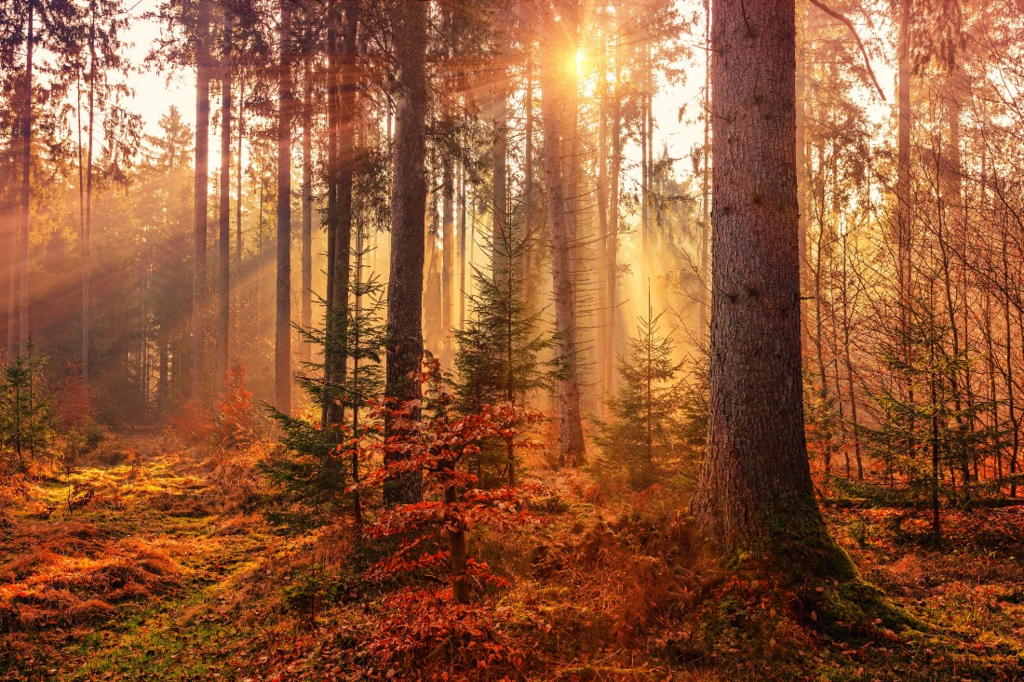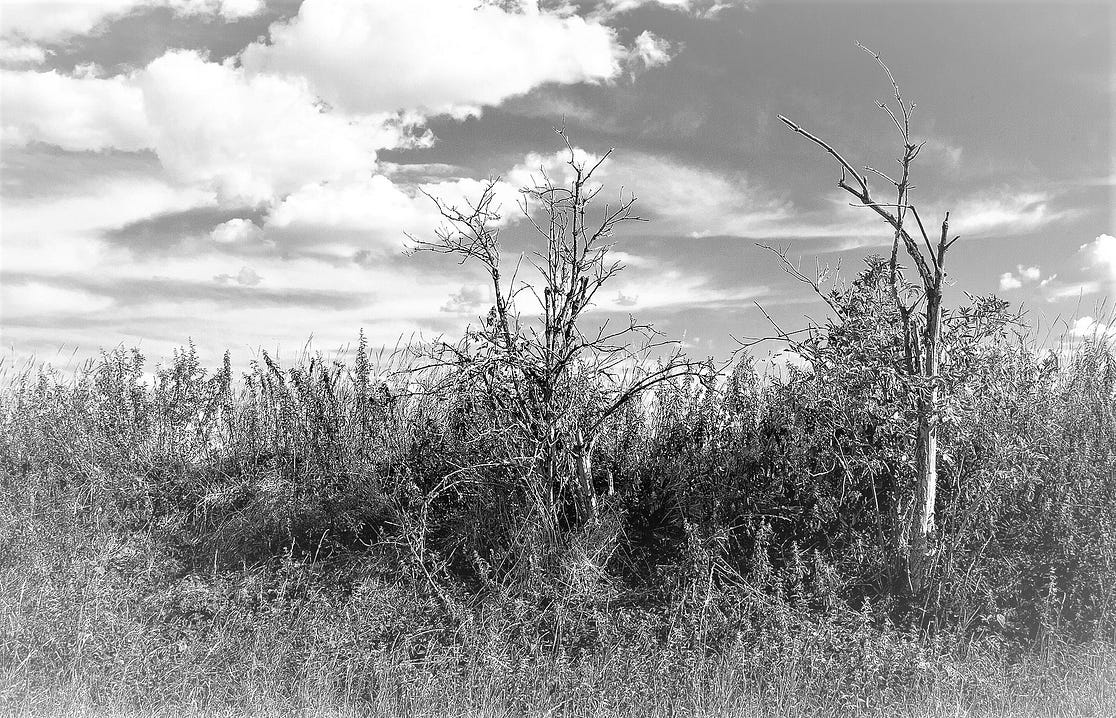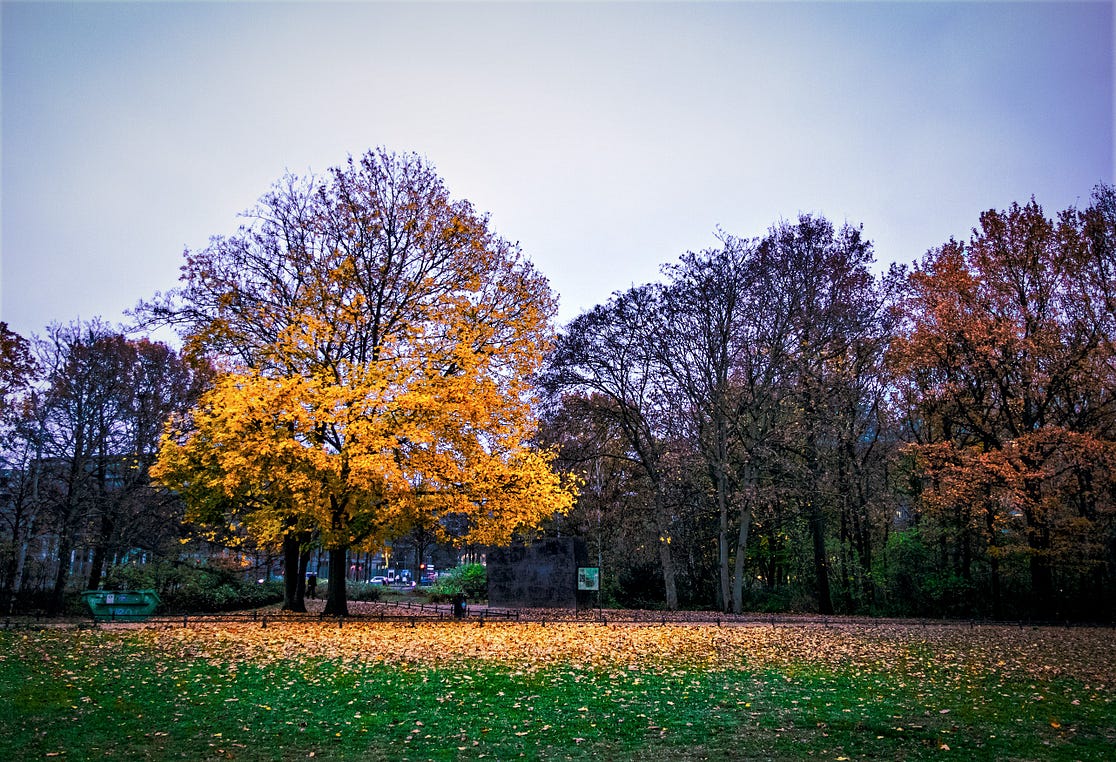
Landscapes and Photography
September is neither here nor there. Summer ends when autumn winds bite at frozen fingers.
I complained, a little, when the weather got too hot for northern climes.
I moved away from Spain because I missed the seasons, definitive seasons of warmth, chill, freezing weather, and back to the “first signs of springtime” lifestyle.
So, I headed back to my beloved city of Berlin. Known for harsh winters and beautiful mild summers.
The first week of return, Berlin was hotter than Madrid at 38 degrees Celsius — and humid to boot. My shirt stuck to my body like a wet tea cloth, I looked like that skinny street rat who could do with a good meal. It must have been all those Spanish tapas.
The heat, the sunshine, I’ll take the sunshine on street corners any day, but a long day of sweltering heat that follows you through every doorway, and blasts through early morning windows is a bit stark.
As autumn begins to show its character, and clouds form into baubles that roll, stop, reform themselves, then move ever eastwards, I know it’s time to adjust my thinking about photography.
Autumn is Coming
It’s easy to allow the mind to become dulled by the thought of days ahead when the sun just about rises above rooftops. The shadows in autumn turn from solid oil brush strokes that block in the shapes of the street, and accentuate colours that beg to be captured.
Swathes of faded greys, shapes that shift in and out of vision. Not even a watercolour, more of a pencilled 2H sketch that is neither here nor there, bathe the streets.
Yet, if winter has inspired so many paintings, so many wonderful photos, and moved the hearts of artists throughout history, then surely we can find a new angle of light to chase through the coming months.

To think of how clouds form, change shape again, transform their colours — those subtle grey tones — with the occasional golden tinged edge, and the deep dark thunderclouds that will surely come, there is drama ahead of us. Good reason to get out and hunt down corners of the sky and landscape, city, or countryside, and capture something special. You’ll only know if you are there, if not, you’ll miss something while you sit and wish for summer again.
Summer, especially high summer, is a photographer’s dream time. A few weeks of utter amazement, coming home with shots that make you smile, and remember, and are worth keeping.

Winter is a challenge to inspiration, to the imagination, and motivation. There’s not much use in yearning for something that isn’t, when it’s steaming hot, I want a cup of cold water, and when the weather is freezing I want a warm jacket. We can enjoy the moment as it really is, and delve deeper into what we see, then we’ll discover the delights and wonders of why winter inspires the brave artist.
Worn Out Fingers
When Monet was older, he said that the only thing that made him sad was that he needed another 90 years to perfect his art. He kept on, fully motivated in his painting. As he aged, his fingers suffered from arthritis so he would have his housemaid tie a paint brush to his hand, his fingers wrapped around it. I can imagine it would have been a well-thought-out brush size. Something around a number 20 round bristle brush, a size that an experienced artist could use in every situation. Imagine, as a photographer, that you could only use one lens.
You head out into the wilds of your city, and must, without fail, produce something worthwhile with a 35 mm prime lens — you’re going to have to use your feet, a lot. Get in close. Or start taking an interest in architecture, and create big compositions.
Or a bigger challenge in a tight city space, 85 mm prime lens. After spending all summer photographing people and groups on the street with your 50 mm. Suddenly, when you point your camera you see heads and shoulders, fragments of faces half in, half out of the frame. You are challenged to change your point of view, take a new perspective and make good from what you have. A photographer meets nature halfway, and listens to it. The tools we use are specific, we must work with them and not against.
A new perspective must come as we roll out of the heated summer and into a darker, shadowy autumn. A time when contrast isn’t easily seen. Objects look flat, their textures hidden by the low light.
For street photographers, colourful clothing is replaced with black coats and dark shoes. But, the wind sweeps through hair, and people’s faces with fading tan, become pale cheeks and rosiness.
People hunch their shoulders, and stamp their feet to keep themselves warm. Pedestrians move quickly to generate heat, and get indoors, dreaming of a hot cup of tea.
Humans, like animals in the woods, have their routines, and their techniques of survival; autumn is a prelude to a harsher time ahead.
Autumn is curled leaves falling to the street, red and gold carpets found under trees, as if during the night fairies played games with nature’s colours.
A photographer’s dream of colours and contrasts, of sweeping rivers of light along wet roads, are all there. Puddles full of strange and inspiring reflections of what’s above.
It’s when you look into dark puddles, and find your inspiration, the motivation to frame, play, to move your feet, and not go home, but keep capturing the small secrets left by the wind and night-fairies, moments that only a photographer can see. That is when you’re glad to be out, and living, camera in hand. The cold, the wind, rain and dark sky, hunched shoulders, and shivering dogs, all become drama.

Leave a Reply
You must be logged in to post a comment.